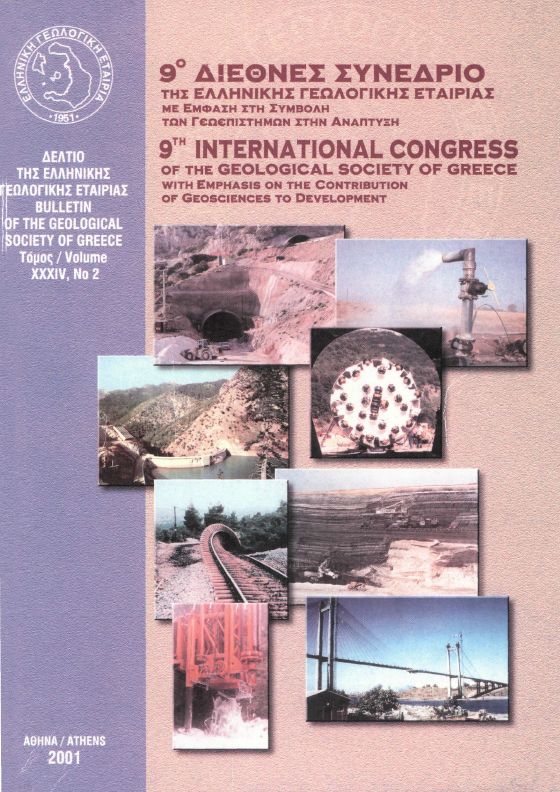Surficial mass movements and submarine slope stability analysis between Kerkyra and Paxi slope (Western Greek slope)

Abstract
This paper presents the results of a marine geophysical/geotechnical survey, which was carried out between Kerkyra and Paxi slope (part of the western Greek slope). The main bathymorphological features are numerous canyons and intercanyon ridges that exhibit high slope gradients (up to 30Ί). The canyon flanks as well as the ridges are affected by numerous mass movements that include slides, rotated sediment blocks, well-expresed sediment detachment surfaces, mass flows and creeping. Most of the aforementioned movememtns present a retrogressive action of the failure mechanism. The unstable sediment masses are often transported through the canyons and are deposited in the adjacent basin creating a sequence of alternating mass flow deposits and turbiditic/hemipelagic sediments. The gravity cores collected along two ridges, in the Kerkyra and Paxi slopes, revealed a certain sedimentary sequence consisting of calcareous ooze, oxidized mud and a sapropel layer overlaying hemipelagic mud. Along those sediment facies turbiditic muddy to sandy deposits usually appear. The main geotechnical characteristics of these lithofacies are the low undrained shear strength and high water content in the sapropel layer and the inverse relationship of the abovementioned properties in the oxidized mud. The water content of all the sediments is higher than the liquid limit indicating the very soft nature of the deposits and the possible destabilization upon disturbance (i.e. earthquake). The stability of the sedimentary cover was evaluated using the infinite slope, the Bishop and the Janbu methods. The main results that stemmed from the analysis are that (i) the Kerkyra slope is unstable both in static and dynamic conditions and (ii) the Paxi slope is unstable in dynamic conditions, whilst the very surficial layers (<1.5m in thickness) can be also unstable under static conditions. The possible failure planes are located 5-20m under the seabed. The absence of the oxidized mud and sapropel layers in the Kerkyra slope as well as their presence in the Paxi slope, and the presence of an episapropelic layer in the Kerkira-Paxi basin are all indicative of the unstable nature of the seafloor. Cyclic loading by earthquakes, high slope gradients and sediment bedding parallel to the slope are believed to be the predominant slope failure mechanisms in the surveyed area.
Article Details
- How to Cite
-
ΧΑΣΙΩΤΗΣ Θ., ΠΑΠΑΘΕΟΔΩΡΟΥ Γ., & ΦΕΡΕΝΤΙΝΟΣ Γ. (2018). Surficial mass movements and submarine slope stability analysis between Kerkyra and Paxi slope (Western Greek slope). Bulletin of the Geological Society of Greece, 34(2), 663–670. https://doi.org/10.12681/bgsg.17127
- Section
- Marine Geology and Oceanography

This work is licensed under a Creative Commons Attribution-NonCommercial 4.0 International License.
Authors who publish with this journal agree to the following terms:
Authors retain copyright and grant the journal right of first publication with the work simultaneously licensed under a Creative Commons Attribution Non-Commercial License that allows others to share the work with an acknowledgement of the work's authorship and initial publication in this journal.
Authors are able to enter into separate, additional contractual arrangements for the non-exclusive distribution of the journal's published version of the work (e.g. post it to an institutional repository or publish it in a book), with an acknowledgement of its initial publication in this journal. Authors are permitted and encouraged to post their work online (preferably in institutional repositories or on their website) prior to and during the submission process, as it can lead to productive exchanges, as well as earlier and greater citation of published work.




